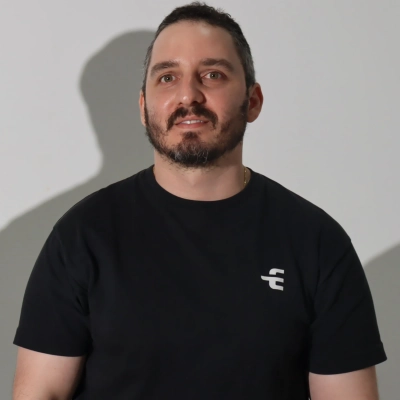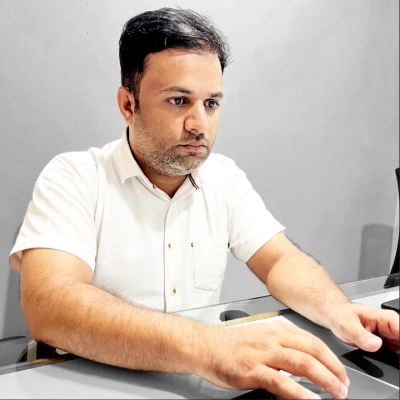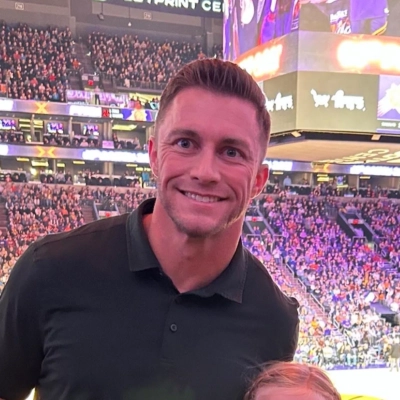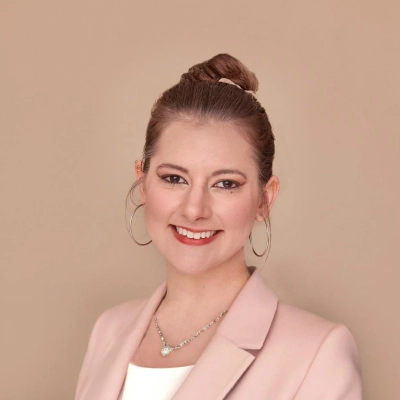25 Products and Services Designed Around Growing Global Trends
This comprehensive guide examines 25 innovative products and services that align with emerging global trends, featuring expert insights on everything from AI-powered vehicle inspection to audiobook evolution. From tech solutions addressing remote work challenges to wellness subscriptions blending convenience with personalization, these offerings represent how businesses are adapting to changing consumer demands worldwide. Each example demonstrates how companies are creating practical solutions to meet evolving needs across industries, with insights from leaders who understand these market shifts.
AI Vehicle Inspection Transforms Latin American Insurance
At Eprezto we built an AI-based vehicle inspection that lets customers buy full-coverage car insurance 100% online, no agent visit, no paperwork. Globally, consumers expect instant, self-serve onboarding; in Latin America, insurance was still fax-and-forms.
Our flow asks drivers for guided photos/videos of their car, runs checks, and returns an insurable value and decision in minutes. It solved a real need: speed and trust at the exact moment of purchase.
The impact was immediate, lower drop-offs after quote selection, faster policy issuance, and a clear path to scale without a brick-and-mortar layer.

Photo Tool Makes DIY Pest Identification Simple
At What Kind of Bug Is This, we built our pest identification tool specifically in response to the growing trend of DIY pest control and online search behavior. More people are skipping the phone call to a pest pro and heading straight to Google or YouTube with pictures and questions like "What kind of bug is this in my bathroom?"
Our tool allows users to upload a photo and answer a few quick questions, helping to narrow down the likely pest. It meets a real need: people want fast, accurate answers without having to dig through forum posts or wait for a callback. By focusing on clarity and speed, we've made pest info more accessible—and that's paid off in both traffic and trust.
Wellness Subscription Blends Convenience with Personalization
One of the most successful products I've seen emerge from a global market trend was built around the rise of wellness-driven convenience. Consumers everywhere were signaling the same shift—they wanted health, but they wanted it effortless. That insight led to the creation of a subscription-based wellness stack that blended nutrition, recovery, and performance products into one frictionless experience.
Instead of selling supplements or programs individually, the model combined data tracking, personalized recommendations, and refill logistics into a single ecosystem. It catered to a post-pandemic reality where people were more health-conscious but increasingly time-poor. The product fulfilled a clear gap: accessibility without compromise. Customers didn't want to research ten brands or decode ingredient lists—they wanted trusted outcomes wrapped in convenience.
What made it work globally was its cultural adaptability. The product messaging was rooted in universal needs—energy, focus, and balance—but localized in tone and delivery. In Asia, it leaned into tradition-meets-modernity. In Europe, it emphasized quality and sustainability. In North America, it positioned around performance and optimization. The foundation stayed the same; the framing flexed to fit consumer psychology.
Within a year, engagement rates soared, and churn dropped significantly because customers weren't just buying a product—they were entering a guided routine that met them where they were. It didn't sell wellness as aspiration; it sold it as integration.
The larger takeaway? The global trends that last aren't built on novelty—they're built on human constants reimagined for modern behavior. When you design around how people live, not just what they want, you create solutions that cross borders—and stay relevant long after the trend fades.
TikTok Delivers Short-Form Content for Global Audiences
It was TikTok indeed. This app made half the planet to dance in their kitchens while still pretending like they were just scrolling for recipes.
In the global aspects, it nailed. Short attention spans and the demand for bite-sized, algorithm-fed entertainment. People didn't want to commit to a 30-minute show or even a 10-minute YouTube video. They wanted dopamine in 15 seconds or less.
The need it fulfilled: boredom relief on an industrial scale. TikTok gave users a platform to create and consume micro-content with almost no friction. Just swipe, swipe, swipe, until you forget what sunlight looks like. For creators, it solved the "how do I get discovered?" problem, since the algorithm pushed random nobodies into virality overnight.
Result: it grew into a cultural juggernaut, rewired marketing strategies, and made every competitor scramble to launch their own knockoff "shorts" feature.

Oatly Meets Environmental and Health Consumer Demands
One example that comes to mind is Oatly, the Swedish oat milk brand. Oatly was designed to cater to the growing global trend of plant-based and environmentally conscious eating. As more people became concerned about the environmental impact of dairy farming and sought alternatives due to lactose intolerance or dietary preferences, Oatly positioned itself as a sustainable, healthy, and accessible option.
The product fulfilled multiple needs at once. Nutritionally, it provides a dairy-free source of calcium and vitamins, making it suitable for people avoiding cow's milk. Environmentally, it has a significantly lower carbon footprint than traditional dairy, which appeals to consumers increasingly motivated by climate-conscious choices. Socially and culturally, Oatly leveraged clever marketing and transparent branding to connect with millennials and Gen Z, making plant-based milk feel trendy rather than restrictive.
Its success demonstrates how aligning a product with a global shift—like sustainability and plant-based diets—can create rapid adoption across markets. Oatly's rise wasn't just about taste; it addressed deeper consumer desires: ethical consumption, health, and lifestyle identity. By tapping into these intersecting needs, it became more than just a product—it became a cultural movement, expanding globally from coffee shops in Sweden to supermarkets in North America, Europe, and Asia.
It's a reminder that successful products often succeed because they anticipate or amplify a trend while solving a tangible problem in a way that resonates emotionally and practically with consumers.

Zors Platform Solves Global Franchise Management Challenges
Zors was born directly out of a growing global trend: the rapid expansion of franchising across borders and the increasing demand for digital infrastructure to manage that growth.
Franchisors were scaling faster than their systems could handle. Most relied on spreadsheets or CRMs built for general sales, not for managing complex franchise data—like territory boundaries, compliance timelines, openings, closures, and performance tracking. As more brands expanded internationally, those gaps became mission-critical.
We built Zors to meet that exact need. It's a SaaS platform that combines mapping, CRM, and compliance tools into one ecosystem designed specifically for franchisors. Users can visualize territories, track franchise data across regions, and stay audit-ready year-round—all in a single interface.
The success came from recognizing that the trend wasn't just "digital transformation," but specialization. Franchisors didn't need another generic CRM—they needed one built for their world. By aligning our product with the operational realities of global franchise expansion, Zors filled a void in an industry that's scaling faster than most realize.

Cloud Solutions Enable Secure Remote Work Access
Cloud-based platforms are a prime example of catering to the global remote work trend. We observed a massive shift towards distributed teams who needed secure and reliable access to their systems. Our managed cloud solutions fulfilled this by providing a scalable infrastructure that supports business operations from anywhere. This ensured operational continuity and security, which became paramount for every organisation.
Eco-Friendly Pest Prevention Balances Safety with Results
One service we've developed to fit a growing trend is our eco-friendly pest prevention plan. More homeowners in the Midwest have been asking for safer, environmentally conscious options—especially families with kids or pets who want long-term protection without harsh materials. We built this plan around that demand, using targeted treatments and prevention strategies that reduce impact on beneficial insects and the environment.
It filled a real need for balance. People want effective pest control, but they also care about how it's done. Offering a service that respects both made us stand out and built stronger trust with our customers. It showed that you don't have to sacrifice results to be responsible, and that approach has only become more important as awareness around sustainability continues to grow.

Automated Kiosks Combat Electronic Waste Problem
A clear example that comes to mind is the rollout of our automated kiosks for used smartphones. A little over a decade ago we saw two converging trends, the global surge in mobile device adoption and the mounting problem of electronic waste. People were upgrading faster than ever, but the options for trading in or responsibly recycling those devices were limited, inconvenient, and often unsafe.
The kiosks were designed to fill that gap. They gave people an easy, secure way to sell a device on the spot and walk away with instant cash. At the same time the machines ensured those phones were properly evaluated, reused, or recycled so they did not end up in a landfill. That combination of convenience for the consumer and responsibility for the planet proved to be exactly what was needed. Looking back, it was not just about creating a new channel for device trade-ins, it was about reshaping how people thought about the life cycle of their electronics.
Tech Certification Programs Bridge Global Skills Gap
A great example is the launch of comprehensive certification programs in emerging technologies like cloud computing, cybersecurity, and agile project management. These programs were specifically designed to meet the growing global demand for skilled professionals who can drive digital transformation across industries. They fulfill a critical need by bridging the skill gap for organizations facing technology adoption challenges while enabling individuals to stay competitive in a rapidly evolving job market. By combining practical, hands-on training with globally recognized certifications, these offerings help learners immediately apply their skills in real-world scenarios, creating measurable impact for both professionals and enterprises.
Spotify Transforms Global Music Consumption Habits
A good case in point is Spotify, which was founded on the growing worldwide trend of on-demand, streaming-based listening rather than media possession.
Listening to music was evolving when Spotify initially entered the market — people no longer wanted to buy individual songs or albums but neither did they want to commit to piracy. Spotify identified this hole and created a smooth, multi-platform streaming experience that wedded convenience, customization, and value.
Here's how it succeeded:
- Scalable personalization: Its recommendation algorithms turned users' discovery, not access, into a reality.
- Global with local relevance: The site personalized playlists, genres, and affiliations to accommodate local tastes — the essence of its global success.
- Freemium model: By hosting both free and paid versions, it reached mass adoption while continually driving conversions.
In the end, Spotify didn't merely ride the streaming wave — it directed consumer behavior worldwide by revolutionizing how listeners perceive and consume music.

Airbnb Creates Authentic Experiences for Global Travelers
The platform Airbnb serves as a perfect illustration of this trend. The platform emerged as a result of the worldwide transition toward experiential travel instead of material possessions. Travelers moved past hotel accommodations because they sought authentic experiences that felt like living in a real home. Airbnb provided customers with homes that carried personal narratives instead of ordinary furniture pieces.
The platform enabled users to experience a sense of belonging in any location they visited. The solution provided more than technical functionality because it delivered an emotional response. People around the world yearned to experience the sensation of home when entering unknown spaces and Airbnb created this experience through its platform.
Frames App Connects Analog Film with Digital Management
A clear example of a product aligned with a growing global trend is Frames (https://withframes.com), an app I designed and developed for film photographers. Over the past few years, film photography has seen a strong resurgence. Major brands like Pentax, Leica, and Kodak have reintroduced film cameras and emulsions, signaling renewed enthusiasm for analog processes among both professionals and newcomers.
Frames was built to complement this revival by addressing a gap between shooting film and managing digital scans. It helps photographers log their rolls, record metadata, and later reintegrate that information into digitized images. The app bridges the physical and digital sides of photography, preserving the craft of film while giving users the structure and clarity they expect from modern tools.
As the film community expands globally, Frames meets a growing need for organization, documentation, and preservation within an analog workflow. It reflects how a niche revival can inspire focused, sustainable software: built not for scale, but for a passionate, worldwide audience embracing creative slowdown and tangible media once again.

Ventilation System Upgrades Cut Home Energy Costs
A roofing contractor doesn't cater to "global market trends." The biggest shift in my local market that we adapted to was the client's intense desire for energy efficiency. Our most successful "service" designed to meet this need is the Mandatory High-Flow Ventilation System upgrade on all full roof replacements.
The need we fulfilled is simple: clients want lower utility bills and they want their expensive new roof to last. We showed them that the old, low-flow attic vents were allowing heat to bake the shingles from the inside out. We made a superior, high-flow ridge vent system a non-negotiable part of the replacement quote.
The service became successful because we positioned the ventilation not as an option, but as mandatory structural protection. We explained that the new vent system protects the shingles and the house's air conditioner, which is the expensive part. This eliminated the client's resistance and immediately shifted their perception from price to long-term value.
The ultimate lesson is that the best "global trend" is just a local homeowner looking to save money. My advice is to stop chasing abstract trends. Focus on a product or service that directly guarantees the longevity of their biggest investment and saves them money on their monthly bills. That tangible value is the only thing that sells itself.
Peloton Combines Technology with At-Home Fitness
A clear example is Peloton's connected fitness platform, which capitalized on the growing global trend of at-home, tech-enabled wellness. The product combined stationary bikes and treadmills with live-streamed and on-demand classes, creating a community-driven fitness experience accessible from home. It fulfilled multiple needs: convenience for busy schedules, a sense of social connection for users unable to attend gyms, and interactive engagement through real-time metrics and leaderboard challenges.
Peloton's success was rooted in recognizing that consumers increasingly valued flexible, immersive, and connected experiences rather than just traditional equipment. By integrating hardware, software, and community features, the platform tapped into lifestyle shifts around health, technology, and remote engagement. This approach not only drove rapid adoption but also created recurring revenue through subscription services, demonstrating how designing around emerging behaviors rather than just products can capture a growing global market trend.

Seasonal Prevention Program Offers Automatic Pest Protection
The service we introduced, which aligned with a broader global trend, was our seasonal prevention program. More homeowners were asking for year-round pest protection instead of reactive treatments, reflecting a growing preference for proactive home maintenance. We designed a plan that focused on consistent inspections and preventive treatments tailored to each season's specific pest pressures in Arizona.
It met the need for convenience and peace of mind. Customers didn't have to think about when to call or what pests to expect—our team handled it automatically. This approach fits into a global shift toward subscription-style home services, where people value reliability and predictability. By focusing on prevention rather than reaction, we built stronger customer relationships and reduced pest problems before they started.

Co-Managed IT Services Address Hybrid Work Challenges
A service we built around co-managed IT was directly in response to the growing global trend of hybrid work and talent shortages in technical roles. Around 2020, we started getting calls from businesses that had solid internal IT folks but were drowning in day-to-day tickets and couldn't keep up with strategic planning or cybersecurity demands. Instead of offering them our fully managed service, we built a flexible co-managed model that plugged into their existing teams—bringing advanced tools, automation, and specialized talent without taking over their whole operation.
The need it fulfilled was twofold: it helped overburdened IT teams scale without burning out, and it let businesses stay competitive in a market where hiring senior tech talent was tough. We measured its success by client retention, internal ticket closure rates, and the speed at which clients were able to adopt new technologies securely. That service line has since become one of our fastest-growing, and it's been incredibly rewarding to see how well it's resonated.

Remote Security Bundle Protects Distributed Workforces
A great example from our own experience at Keystone was designing a remote access and security bundle during the early months of the pandemic. At the time, the sudden shift to remote work exposed major gaps in security—especially for smaller firms that were used to having everyone in the office. We bundled VPN access with multi-factor authentication, endpoint protection, and user training into a single managed service offering. It wasn't a new product in the traditional sense, but it was a focused solution to a very real and immediate market trend.
What made it successful was that it addressed both the technical and human elements of remote work. Clients didn't just need secure access—they needed to feel confident their team wouldn't accidentally click a phishing link or open the wrong door to their network. The uptake was almost immediate, and the bundle became a core part of our service stack. It fulfilled the need for fast, secure, and manageable remote infrastructure—and we're still seeing demand for it as hybrid work becomes the norm.
Remote Monitoring Kit Expands Access to Healthcare
Our remote patient monitoring kit was developed in response to the global shift toward decentralized healthcare and telemedicine. The kit integrates Bluetooth-enabled vital sign devices—such as pulse oximeters, blood pressure cuffs, and glucose monitors—into a unified platform that transmits data securely to providers in real time. This innovation addressed two accelerating needs: reducing hospital readmissions and expanding access to continuous care for patients managing chronic conditions at home.
The demand grew rapidly as healthcare systems sought scalable ways to maintain follow-up care without increasing in-person visits. By simplifying device connectivity and automating data transmission, we removed technical barriers for both patients and clinicians. Adoption among clinics and home-care agencies exceeded projections within the first year, proving that convenience and compliance thrive when medical technology adapts to patient lifestyles rather than expecting the reverse.

Digital Note Buying Platforms Provide Immediate Liquidity
I witnessed this firsthand with the explosion of online note buying platforms that emerged during the pandemic--they tapped into the growing trend of digital real estate transactions and immediate liquidity needs. At American Funding Group, we recognized that private mortgage note holders were increasingly seeking fast, remote solutions to convert their long-term payment streams into immediate cash, especially as economic uncertainty made people prioritize liquid assets over extended payment plans. We streamlined our entire process to work virtually, allowing note holders nationwide to get fair valuations and close deals within days rather than months, which has become essential in today's fast-paced financial environment.

Rapid Storm Response Service Prevents Secondary Damage
Our emergency board-up and storm response service grew directly from the global rise in climate-related property damage. Traditional contractors often struggled to mobilize quickly after severe weather, leaving homeowners exposed to secondary losses. We built a rapid-response division equipped with preloaded materials, GPS routing, and digital claim reporting—ready within hours of a storm's impact. The service met a pressing need for immediate protection while easing insurance coordination for clients. What began as a regional initiative quickly expanded because the demand for resilience, not repair, has become universal.

Fast Home Solution Offers Quick Real Estate Transactions
In the real estate market, I've seen tremendous success with our "Fast Home Solution" program that addresses the growing global trend of prioritizing speed and simplicity in major financial transactions. As more homeowners face sudden life changes--whether it's job relocations, inheritance situations, or financial hardships--they need alternatives to the traditional 3-month selling process. We've created a streamlined service that completes purchases in as little as two weeks with no repairs needed, which gives sellers what they truly value in today's fast-paced world: certainty, convenience, and immediate access to their equity without the typical selling headaches.

Legal Templates Help Businesses Operate Internationally
A great example from FasterDraft was our development of remote-friendly, customizable legal templates designed for small businesses operating internationally. As more entrepreneurs and startups embraced remote work and cross-border operations, we noticed a growing need for accessible, reliable legal documents that could be adapted for different jurisdictions without hiring expensive local counsel.
The product addressed a very specific pain point: business owners struggling to stay compliant while moving quickly in global markets. Templates like international NDAs, contractor agreements, and commercial contracts allowed users to create legally sound documents in minutes, saving both time and money. By aligning the product with this global trend, we tapped into a growing audience of digital-first businesses and made legal processes far more accessible, fulfilling a need for speed, clarity, and scalability in international operations.

OEM Turbochargers Guarantee Heavy Duty Truck Uptime
Our "growing global market trend" is not some new technology; it is the simple, brutal demand for every Heavy duty trucks rig to stay on the road. The trend is zero downtime. Our successful service was recognizing that our clients weren't buying an OEM Cummins Turbocharger; they were buying their next mile of reliability.
The need we fulfilled was certainty. The market was flooded with confusion and cheap parts. Our approach was simple: build a distribution machine for OEM quality turbochargers and actuators that ships out the door instantly. We brand this service "From Texas to Local" because we can get the part anywhere in our market fast.
This required operational discipline. We only deal in brand-new parts with expert fitment support to cut down on any mistakes. As the Marketing Director, I focused entirely on promoting our 12-month warranty. That warranty isn't a guarantee of the part; it's a guarantee of our operational commitment to the client's uptime.
The ultimate lesson is that in our trade, the winning product is never the hardware. It is the peace of mind. We cornered that market by becoming the Texas heavy duty specialists who guarantee you won't have another headache.

Audiobooks Evolve from Accessibility Tool to Mainstream
There are countless examples of this, fulfilling a user need in a marketable way is one of the core guiding principles of good product design. One of the biggest unsung heroes of the invention world (yet one of the most impactful product concepts ever made) was the talking book. Now a $7 billion global industry known as "Audiobooks", these talking books educate the masses to this day.
Their history goes back to Thomas Edison responding to the trend of education in the 1870s, when education of the public was a top priority of the post-civil-war US Government. Although Edison invented the talking book to allow the blind, and later the many wounded veterans from world wars, the ability to enjoy literature and learn alongside their peers, their use and popularity has finally reached the general public in past decades.
For some history, public education was a major part of the American zeitgeist at the time, stemming from post-civil war reconstruction efforts, with a belief that an educated population created a stronger democracy, stronger workforce, and more national unity. This was especially true for all of the previously illiterate and recently freed slaves as well as the booming levels of new immigrants. This can be illustrated by some of the most well-known novels from the time, such as "Little Women" - Louisa May Alcott, "The Adventures of Tom Sawyer" / "Huckleberry Finn" - Mark Twain, and "Up From Slavery" - Booker T. Washington. Horace Mann should also sound familiar. Former President Andrew Johnson also founded the Department of Education (formerly Office of Education) at this time.
The use of audiobooks as a product and service became even more popular to the mainstream public, though, when the invention of portable and affordable cassettes from Philips, and cassette players, like the Sony Walkman, became available a century later. This brought the power of knowledge to the masses in the 1970s.
Audiobooks have also played a valuable role in language development and literacy in education, teaching children pronunciation and vocabulary as well as entertaining them.
More recently, of course, Apple and Amazon have invested in audiobooks, by recording and marketing them for the growing masses of people who enjoy listening to their favorite authors, celebrities, and anthologies while commuting and working. Investment in audiobooks was a wise move, as it's continuously expanding, and is projected to quadruple in size by 2030.










